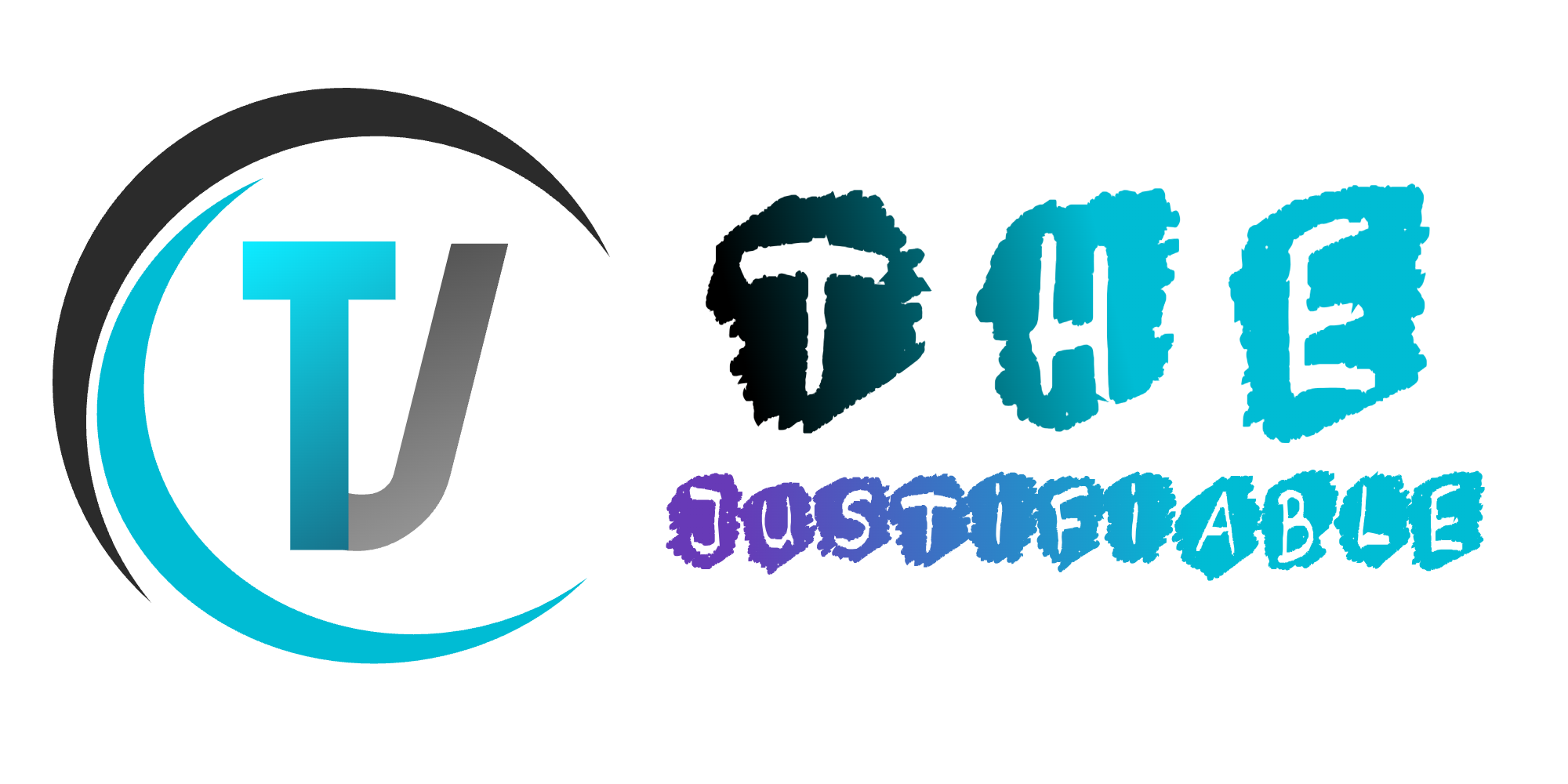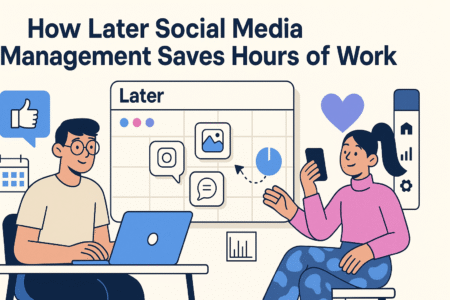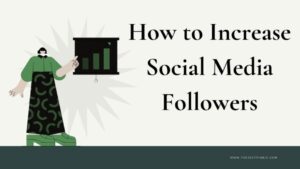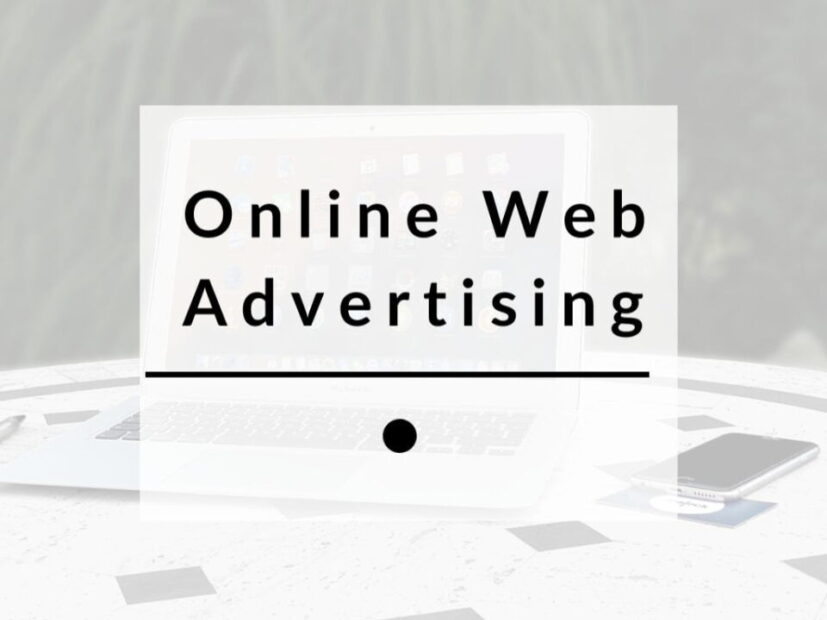What if your ads could adjust themselves in real time to reach the right person, with the right message, at just the right moment? Could your creative process be faster, more effective, and even predictive—without sacrificing quality or brand voice? That’s exactly what AI-powered ad creative aims to deliver.
In this guide, we’ll explore how AI is transforming the way marketers create and optimize ads. From cutting production time to improving personalization and performance, you’ll discover how to work smarter, not harder. If you’ve been wondering how to get better results without burning out your team or budget, you’re in the right place. Let’s break it down step by step.
Unlocking the Power of AI in Ad Creative Strategy
Using AI in your ad creative strategy isn’t just about saving time—it’s about unlocking a smarter, data-driven approach to advertising that adapts, learns, and improves continuously. Let me walk you through how AI is reshaping the creative process and why it’s become such a powerful tool for marketers chasing better ROI.
What Makes AI Different From Traditional Ad Creation?
Traditional ad creation has always relied heavily on creative intuition and manual processes. From brainstorming visual concepts to writing copy, much of it depends on trial-and-error. While this can lead to memorable campaigns, it’s often slow, expensive, and unpredictable.
AI flips this model on its head.
Instead of starting from a blank slate, AI tools begin with data—lots of it. These platforms analyze patterns across past campaigns, audience behavior, and performance metrics to suggest creative elements that are statistically more likely to work. So rather than guessing, you’re working from a foundation of evidence.
Here’s how the process differs in practice:
- Speed: AI tools generate dozens (or hundreds) of variations in minutes.
- Precision: Ad components are tailored using real user data like click-through rates and engagement history.
- Scalability: AI can easily create versions for multiple platforms, formats, and audiences without increasing creative workloads.
Think of AI as your creative assistant that never sleeps, always tests, and constantly learns what works best—freeing up your time to focus on strategy and big-picture thinking.
How AI Analyzes Data to Drive Better Ad Decisions
One of the most impressive things about AI is how it transforms raw data into actionable creative insights. If you’ve ever stared at analytics dashboards trying to figure out why one ad outperformed another, this part is a game-changer.
AI platforms crunch large datasets to uncover patterns humans might miss. They can analyze:
- Which images drive more clicks across different demographics
- How certain phrases or CTAs perform at different times of day
- What color palettes or layouts influence conversions
This isn’t just about big numbers, either. AI can go granular—down to the font style that performs better with mobile users or how button placement affects bounce rates.
Here’s what this looks like in action:
- Predictive analytics: AI forecasts which creative assets are likely to perform best before launch.
- Audience insights: It tailors content based on behavioral segments, not just basic demographics.
- Content suggestions: AI can suggest wording, tone, or design tweaks based on what has worked previously.
Over time, the system improves. The more data it processes, the smarter it becomes. And when it’s paired with human creativity, the results are often far stronger than either could achieve alone.
Real-Time Optimization for Maximum ROI
Traditional campaigns often run on autopilot after launch. You set your ads, wait a few days, then tweak them based on performance. But AI has completely transformed this cycle.
With AI-powered ad creative, optimization happens in real time—while your campaign is live.
Here’s what that means:
- Automatic adjustments: AI will pause underperforming creatives and prioritize the top-performing versions without needing manual input.
- Live A/B testing: It continuously tests creative elements (like headlines, visuals, or CTAs) to discover what resonates best at that moment.
- Dynamic personalization: The system can deliver tailored ad variations to different users instantly, adjusting to their location, device, behavior, or time of day.
This real-time intelligence keeps your campaigns sharp. Instead of wasting budget on ads that aren’t working, AI helps your dollars flow toward creatives that drive actual results. And for brands operating across multiple markets or audience types, this precision can translate to significant increases in ROI.
Let me give you a quick example. Suppose you’re running a campaign for a fitness app. With AI, your ads could automatically:
- Show gym-related imagery to users interested in weightlifting
- Serve morning-focused motivational headlines to early risers
- Prioritize discounts during peak engagement times
All of that happens on autopilot—with the AI constantly learning and adjusting based on performance data.
The Role of Machine Learning in Creative Testing
Creative testing has always been one of the most time-consuming parts of campaign management. Manually building variations, waiting for results, and then adjusting—it’s a slow loop. But machine learning simplifies and speeds it up dramatically.
Instead of guessing which creative will perform best, machine learning models test hundreds (or even thousands) of variations and learn from the outcomes in real time. These models do more than just track CTRs or impressions—they identify patterns in how users engage with visual elements, language, tone, and layout.
Here’s how machine learning improves the testing process:
- Automated version generation: AI tools generate a wide range of ad variations based on your core assets.
- Smart learning loops: With each iteration, the system refines its understanding of what works, gradually eliminating underperformers and improving top contenders.
- Multi-factor analysis: It doesn’t just test one variable at a time; it can evaluate multiple variables (like color, headline, and placement) simultaneously to find winning combinations faster.
You don’t need to be a data scientist to benefit from this. Platforms like Pencil, AdCreative.ai, and Smartly.io handle the back-end complexity, so you just review the results and decide how to apply them to your broader creative strategy.
And here’s the kicker—this testing happens without the downtime. Instead of launching an A/B test, waiting days, and making manual edits, machine learning handles the experimentation behind the scenes and feeds the winners directly into your live campaigns.
Top Benefits of Using AI-Powered Ad Creative
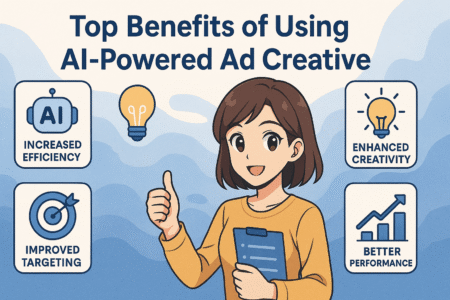
The beauty of AI-powered ad creative lies in how it makes your marketing sharper, faster, and more effective without adding extra weight to your workflow. Here’s a closer look at the most valuable benefits that make this tech worth your time.
Personalized Ads That Actually Convert
Personalization is no longer optional—it’s expected. But doing it well at scale? That’s where many marketers hit a wall. AI bridges that gap by helping you craft tailored messages for different users without rewriting or redesigning your ad for every variation.
AI tools take into account behavior, demographics, engagement history, location, device, and even time of day to dynamically deliver the right creative to the right person. Instead of casting a wide net and hoping for clicks, you’re offering content that’s relevant to the individual scrolling through their feed.
A few ways AI enhances personalization:
- Automatically adjusts headlines or visuals to align with user interests.
- Targets shoppers with products they’ve browsed or left in their cart.
- Changes tone or imagery based on user segments—like showing different visuals to first-time visitors vs. returning customers.
One simple example? An AI-driven platform might show a minimalist product image to a user who typically engages with clean aesthetics, while offering a more vibrant, lifestyle-focused creative to someone who favors colorful content. These micro-adjustments make a big difference in performance.
Personalized ad creative helps improve relevance, and relevance drives results. That’s how you move from getting impressions to getting conversions.
Faster Production Without Compromising Quality
Creating ad variations manually is time-consuming. Between headline brainstorming, visual design, and formatting for different placements, even a simple campaign can eat up hours—or days. AI speeds this up dramatically.
With AI-powered ad creative tools, you can input your brand assets and let the platform generate dozens of tailored ad variants in minutes. It’s like having a full-time creative team on standby—but without the bottlenecks.
Here’s how it typically works:
- Upload your base copy, branding elements, and creative assets.
- AI generates multiple versions optimized for different formats and audience segments.
- You review and select the best performers, tweak if needed, and launch.
The bonus? These tools are getting really good at preserving tone, brand consistency, and design standards. So you don’t have to sacrifice quality for speed.
Some platforms also offer smart templates that stay on-brand while automatically adjusting for layout needs, whether you’re building for Instagram Stories, YouTube bumper ads, or Facebook carousels.
The faster you can produce and test creative, the quicker you can optimize and scale. That momentum leads to a stronger, more agile ad strategy.
Lower Cost Per Acquisition With Predictive Insights
At the end of the day, it’s about results. And nothing matters more to most marketers than cost per acquisition (CPA). AI gives you a major advantage here by making every dollar work harder.
By analyzing data patterns from past campaigns, AI tools can predict what type of creative will most likely drive clicks, conversions, and ultimately, sales. Instead of spreading your budget thin testing dozens of directions, AI helps you invest in what already shows promise.
A few practical ways this helps reduce CPA:
- Predictive copy and visual scoring help identify high-performing elements before you go live.
- AI automates creative testing to quickly weed out underperforming versions.
- Platforms can even forecast which ad version will perform best for different channels, so you’re not duplicating efforts or wasting spend.
For example, if your audience historically engages more with testimonial-based creatives, the AI will recommend doubling down on that format. This insight saves time, limits trial-and-error, and maximizes efficiency from the start.
The result is less waste, faster results, and lower acquisition costs—which makes a big impact whether you’re running lean or scaling fast.
Streamlined A/B Testing at Scale
Testing is essential, but doing it manually gets messy—especially when you’re running multiple ad sets across several platforms. AI transforms this process from a tedious chore into a streamlined system that works in the background while you focus on strategy.
With AI-powered ad creative tools, you can:
- Automatically generate A/B (or multivariate) tests across headlines, CTAs, images, and colors.
- Monitor performance in real-time without logging into multiple ad managers.
- Instantly pivot toward the winning creatives without needing to pause or reset campaigns.
Instead of traditional A/B testing that takes days or weeks to show results, AI can deliver insights within hours—sometimes minutes—depending on your traffic and spend levels. It constantly refines which elements drive engagement and automatically adapts future creative accordingly.
Imagine uploading one headline, two product images, and three CTA options. In just a few clicks, the AI can generate 12+ ad combinations, test them simultaneously, and funnel spend toward the top performers in real-time.
The best part? You don’t need to be a data expert. These platforms usually offer clear dashboards with simple recommendations, so you’re not left guessing what to do next.
This speed and clarity in testing gives you the confidence to experiment more, optimize faster, and keep your creative approach agile and data-informed.
Creative Fatigue Prevention Through Dynamic Variation
We’ve all seen it—ads that perform well in week one but slowly fade into the background as users get tired of seeing the same thing. Creative fatigue is real, and it kills performance.
AI helps you fight this problem by generating dynamic creative variations that keep your content fresh without burning out your design team.
Here’s how it works:
- AI tools create multiple design and copy variations from a single set of assets.
- As performance starts to dip, new versions are automatically rotated in.
- Variations are often optimized per user segment, meaning people see slightly different creatives even within the same campaign.
This constant evolution helps maintain engagement without having to rebuild your campaign from scratch. Whether it’s a new image, a different call to action, or a seasonal tweak to the copy, AI handles the refresh before fatigue sets in.
Some platforms even allow you to schedule creative rotations based on predicted drop-offs in engagement—keeping your ads ahead of the curve.
If you’re running long-term campaigns or investing heavily in a single product push, dynamic creative variation can mean the difference between ad blindness and steady conversions.
Best AI Tools to Supercharge Your Ad Campaigns
Finding the right tools to support your ad campaigns can make all the difference. AI-powered platforms now offer smarter ways to brainstorm, create, test, and scale your ads—with less guesswork and more clarity. Here’s a closer look at some of the most effective tools built to improve your workflow and results.
AdCreative.ai – High-Performance Creative Generation
If your goal is to produce ad creatives quickly while keeping performance top of mind, AdCreative.ai is a solid starting point. It’s built to generate conversion-focused visuals and copy based on data-backed insights rather than random creativity.
This tool uses AI to:
- Analyze your brand style and previous performance
- Generate static and video ads tailored to your target audience
- Score each creative based on its predicted conversion rate
What’s helpful about AdCreative.ai is how fast it works. Once you plug in your assets—like logos, brand colors, and product images—it creates multiple ad versions for platforms like Facebook, Instagram, Google Ads, and LinkedIn. You don’t have to manually test layouts, colors, or calls to action because the platform is already optimizing for what performs best.
It’s especially useful for ecommerce brands or agencies that need to create a high volume of creatives regularly. You can connect your ad accounts directly and get performance feedback that helps you improve future designs with less trial and error.
If you’re looking for a tool that focuses on data-driven visuals and speeds up production without overcomplicating things, AdCreative.ai is worth testing out.
Pencil – Predictive Ad Performance Using AI
Pencil offers a different take on AI-powered ad creative by focusing heavily on prediction. It doesn’t just help you create ads—it also helps you understand how those ads are likely to perform before you spend your budget running them.
Here’s what makes Pencil stand out:
- It uses historical data to predict which ads will drive the best return on ad spend (ROAS)
- Offers creative suggestions based on past performance patterns
- Continuously tests and learns which messages resonate with your audience
The real power of Pencil lies in its creative intelligence. You can input your brand guidelines and campaign goals, and the tool builds variations of video ads tailored to different audience segments. Then, before the ad even goes live, it gives you a prediction on how likely that creative is to perform well.
That prediction is based on thousands of past ads and the behaviors they triggered—so you’re not starting from zero. It’s a smart way to reduce risk, especially if you’re working with limited budgets or need to show quick results.
Pencil is a good fit for growth marketers, performance-focused teams, or brands that want to lean into predictive data to shape their creative direction.
Copy.ai – AI-Powered Copy That Sells
When your visuals are strong but the copy needs a boost, Copy.ai steps in to help you write better, faster, and in a tone that fits your brand. Whether you’re crafting product descriptions, headlines, ad captions, or full-blown campaign messaging, it’s one of the more intuitive tools for ad copywriting.
With Copy.ai, you can:
- Generate multiple headline and call-to-action options instantly
- Create tailored content for different platforms or audience segments
- Choose tones and formats that match your campaign goals
It’s especially useful during those creative dry spells when you’re stuck staring at a blank screen. The platform is conversational and easy to use. Just enter a short product description, audience, and goal—and you’ll get dozens of options to refine or combine.
While it’s not perfect out of the box, the suggestions often give you a solid starting point. You can tweak the results to add a human touch or make the message more specific. It’s also a great resource when you need to generate variations for A/B testing without spending hours brainstorming.
If you’re managing multiple campaigns or juggling several clients, Copy.ai helps you move faster without sacrificing quality.
Smartly.io – Automated, Multi-Platform Creative Management
Smartly.io is a full-scale solution built for teams that run large, complex campaigns across several platforms. It brings AI automation to both the creative and operational side of ad management, which makes it especially useful for scaling efficiently.
Here’s what it does well:
- Automates creative production with dynamic templates
- Integrates directly with platforms like Meta, TikTok, Pinterest, and Snapchat
- Offers AI-based testing, performance insights, and creative optimization
What sets Smartly.io apart is its all-in-one nature. It combines creative automation, media buying, and real-time reporting in one platform. That means you can build creatives, launch ads, and track performance—all without switching tools.
The dynamic creative tools allow you to adjust copy, design, and layout variations at scale based on real-time performance. If you’re running international or multi-language campaigns, Smartly.io can also localize your content automatically, keeping your message consistent but culturally relevant.
It’s ideal for brands that already spend heavily on paid social and want to bring more intelligence and efficiency into the process. Think retail, travel, or direct-to-consumer ecommerce brands managing lots of products and promotions.
Jasper – Long-Form Ad Copy with AI Precision
Jasper (formerly Jarvis) is best known for long-form content generation, but it’s also powerful when used for crafting in-depth ad copy—especially for landing pages, advertorials, and lead-generation campaigns.
With Jasper, you can:
- Create conversion-optimized copy for Facebook ads, Google Ads, and beyond
- Write engaging headlines, benefit-driven product descriptions, and email ads
- Maintain brand tone and consistency across formats
What’s especially helpful is Jasper’s use of templates. You can choose one designed specifically for Facebook ads, for example, and the tool walks you through a structure designed to convert—often starting with a hook, followed by a problem statement, solution, and call to action.
It’s also well-suited for storytelling. So if your campaigns include a narrative element, like founder stories or customer journeys, Jasper can help shape that in a clear, structured way.
Jasper integrates with Surfer SEO, Grammarly, and other tools if you’re looking to bring more cohesion to your full content marketing strategy. While it’s best for copy-heavy creatives, it plays nicely with visual tools like AdCreative.ai or Smartly.io to build more holistic campaigns.
If you’re running ad funnels that need more than a quick caption—like product explainer pages or quiz funnels—Jasper helps you write with confidence and clarity.
Proven Ways to Use AI to Boost Creative ROI
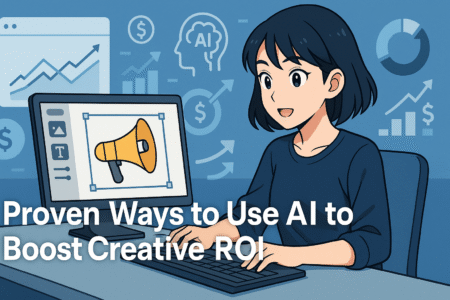
Boosting your creative return on investment isn’t just about producing more ads—it’s about making smarter choices from the start. When you use AI strategically, you not only save time but also sharpen your campaigns for better results. Let’s explore some clear, practical ways to get the most out of your AI-powered ad creative.
Let AI Analyze What Works Before You Launch
One of the biggest missed opportunities in ad creation is launching without enough insight into what actually works. This is where AI can step in and make a huge difference.
Instead of guessing which creative elements might perform well, AI platforms can evaluate past campaign data and identify which visuals, headlines, CTAs, and ad formats have delivered the best results. Some tools even compare your inputs with performance benchmarks across your industry.
Here’s how to make this work:
- Feed your past campaign data into an AI analysis tool like Pencil or AdCreative.ai.
- Look for patterns in high-performing ads—was it a particular color scheme, tone of voice, or layout?
- Use these insights to shape your next batch of creatives before spending a dollar on ads.
This process doesn’t have to be complex. Even small insights—like knowing that your audience prefers testimonial-based headlines or product close-ups—can help you avoid costly trial-and-error. The earlier you can spot patterns, the more likely your creative will land well with your audience from day one.
Think of AI as a research assistant who already knows what your audience likes and gives you a head start.
Use Generative AI for Fresh, On-Brand Visuals
We all hit creative ruts from time to time. Whether it’s a product launch or a seasonal promotion, generating fresh visuals that align with your brand—without going off track—can be tough. That’s where generative AI tools come in handy.
Generative AI can create original designs, mockups, or image variants based on your brand style and campaign goals. You don’t need to be a designer or rely solely on stock images. Instead, you can use tools like AdCreative.ai or Canva’s AI features to generate visuals tailored to your message.
Here’s what this might look like in practice:
- Input your product photos, brand colors, and tone preferences.
- Use the AI to create multiple ad visuals, each aligned with a different audience segment or platform.
- Choose the ones that feel most authentic to your brand—and let AI suggest tweaks to enhance performance.
The benefit here is not just volume—it’s alignment. These tools learn your style preferences over time and can create visuals that feel consistent across campaigns.
And if you’re working with a small team or tight deadlines, this kind of support means you’re never starting from scratch. You’ll always have a few good directions to test, refine, and move forward with confidence.
Automate Versioning for Different Audiences and Platforms
If you’ve ever tried to resize, rewrite, or reformat a single ad to work across Facebook, Instagram, YouTube, and Google Ads—you know how time-consuming it can be. AI makes this easier through automated versioning.
With the help of AI, you can generate multiple ad variations from a single set of assets. These can be tailored to different:
- Audiences (demographics, behaviors, interests)
- Devices (desktop vs. mobile)
- Platforms (social vs. search vs. video)
Tools like Smartly.io and Creatopy help you:
- Automatically resize creatives for each platform’s specs
- Adjust copy to fit character limits and tone expectations
- Modify visual layouts to match user habits on different platforms
Let’s say you’re promoting a new app. AI can help you serve one creative to tech-savvy users on Reddit, another to Gen Z on TikTok, and a more professional tone on LinkedIn—all from the same core message.
This kind of flexibility is essential if you want to stay relevant while scaling your reach. And the beauty is, you don’t need to start from zero each time. AI handles the technical grunt work so you can focus on high-level messaging and campaign direction.
Implement Predictive Analytics to Forecast Ad Success
Wouldn’t it be great to know how your ad is likely to perform before it even launches? That’s exactly what predictive analytics tools aim to deliver. And yes, they’re powered by AI.
These tools analyze creative elements—like tone, structure, visuals, and layout—and compare them to high-performing ads in your niche. Based on this, they predict metrics like engagement rate, click-through rate (CTR), and even conversions.
How to get started:
- Use platforms like Pencil or Kafkai that offer predictive scoring for ad copy and visuals.
- Submit your draft creatives and review the performance forecast.
- Adjust elements (e.g., headline clarity, CTA placement, image brightness) to improve your predicted score.
While no prediction is perfect, these forecasts are often surprisingly accurate because they’re trained on thousands of historical ad results. It’s a useful checkpoint before you put your budget on the line.
For teams that report to clients or stakeholders, predictive analytics also gives you a data-backed reason to go with one concept over another. It brings objectivity into a space that’s usually driven by opinion and taste.
Monitor Performance with AI-Powered Dashboards
Once your campaign is live, the real challenge begins: keeping track of performance and knowing when to pivot. AI-powered dashboards give you a clearer, more actionable view of your results—without spending hours buried in spreadsheets.
These dashboards use machine learning to:
- Highlight winning creatives in real time
- Alert you when performance dips or spending spikes
- Recommend changes to improve underperforming ads
Some even go a step further by automatically reallocating budget to the top-performing ad sets or rotating in fresh creative variations to fight ad fatigue.
Tools like Smartly.io and Revealbot make this possible with automated alerts, performance summaries, and customizable reports. Instead of checking five platforms individually, you get one streamlined view that tells you what’s working—and what needs fixing.
This setup not only saves time but also helps you make smarter, faster decisions. You’re no longer reacting to yesterday’s data. You’re adjusting based on what’s happening right now.
And if you’re managing campaigns across multiple brands or regions, AI dashboards give you that much-needed control without the complexity.
Mistakes to Avoid With AI Ad Creative
AI-powered ad creative can be a game changer—but only when used wisely. While the tools themselves are powerful, it’s easy to fall into habits that limit their potential or even hurt your campaign performance. Here are the most common mistakes marketers make when working with AI for ad creation, and how to avoid them.
Relying Too Much on Automation Without Oversight
It’s tempting to let AI take the wheel entirely—especially when you’re juggling multiple campaigns. But too much automation, without human review, can lead to missteps that cost time and money.
AI tools are great at handling repetitive tasks, optimizing versions, and suggesting content based on data. But they don’t always understand nuance, cultural sensitivity, or context. For example, an AI-generated headline might perform well according to past data, but sound off-brand or even tone-deaf in your specific market.
Here’s what to watch for:
- Blindly approving creatives without reviewing them for tone or message
- Relying on performance predictions without testing in real environments
- Letting AI run campaigns without routine manual check-ins
A good balance looks like this: let AI handle the heavy lifting—versioning, optimization, initial copy drafts—but always have a person (or team) review final outputs. Think of AI as your co-pilot, not your replacement.
This kind of oversight helps ensure that your campaigns still reflect your values, strategy, and audience needs, even as you scale.
Ignoring Brand Voice in AI-Generated Copy
One of the quickest ways to disconnect from your audience is by letting your brand voice slip. And unfortunately, that’s a risk when you’re using AI to write ad copy.
While AI copy tools are improving fast, they don’t always grasp your brand personality. They might generate text that sounds too generic, too formal, or just not like you. This can lead to messaging that feels inconsistent or even confusing to your audience.
To keep your brand voice intact:
- Provide clear tone guidelines when using AI tools like Copy.ai or Jasper
- Feed the tool examples of past copy that reflect your tone and style
- Edit AI-generated content before publishing to match your unique voice
If your brand is quirky, serious, playful, or expert-driven, make sure the AI knows that—or be prepared to adjust the content yourself. Some tools even allow you to train a custom voice profile over time, which is worth exploring for long-term consistency.
In the end, the message matters as much as the metrics. Consistency in voice helps build trust and brand recognition, which makes your ads more effective over time.
Overusing AI Without Human-Centered Input
AI can generate hundreds of variations of your creative—but quantity doesn’t always equal quality. Without human direction, your campaigns can end up feeling cold, robotic, or too focused on data at the expense of emotional connection.
Even the best-performing ad needs to feel human. People respond to empathy, storytelling, and a sense of being understood. That’s something AI doesn’t quite nail on its own yet.
What to avoid:
- Overloading your campaign with AI-generated variations without strategy
- Letting performance data dictate creativity entirely, without considering human emotion
- Skipping user feedback or market insight in favor of algorithm-driven decisions
Here’s a more balanced approach:
- Use AI to generate creative directions, but filter them through real user insights or your customer personas
- Combine AI-powered lights with what you know about your audience’s emotions, pain points, and motivations
- Keep storytelling in the mix—it doesn’t need to be long-form, just real and relatable
In short, let AI handle the structure and testing, while you shape the soul of the message.
Failing to Train AI With Quality Data Sets
AI tools learn from the data they’re given. If the data is outdated, biased, or incomplete, the results will reflect that. Unfortunately, this is a mistake many teams don’t even realize they’re making.
When your AI isn’t trained or informed with high-quality inputs, you might see:
- Poor creative recommendations based on irrelevant benchmarks
- Generic or low-performing ad versions
- Misaligned messaging that doesn’t connect with your current audience
To fix this, start by auditing the data you’re feeding into your tools. Ask yourself:
- Are we using recent performance data from our own campaigns?
- Are we segmenting by audience type or campaign goal?
- Are we reviewing the AI’s outputs and correcting patterns that don’t align?
Platforms like Pencil and Smartly.io improve the more they interact with your specific campaigns. The more quality data you give them—things like conversion rates, engagement patterns, audience segments—the better they become at predicting and generating content that works.
Good data in means better results out. It’s as simple as that.
Using the Same Creative Across All Platforms
Each ad platform has its own rhythm, audience behavior, and creative best practices. What works on Instagram might flop on YouTube. Yet, it’s still surprisingly common to see the same creative reused everywhere with only minor tweaks.
AI can help solve this problem, but only if you use it intentionally.
Here’s what to avoid:
- Posting the same image-and-caption combo across every platform
- Ignoring platform-specific specs (like vertical video for Stories)
- Using the same CTA or copy tone without adapting to context
Instead, lean into AI’s versioning capabilities. Many tools allow you to create:
- Instagram-specific creatives with short, snappy text and strong visuals
- Facebook ad versions with multiple CTAs or carousel formats
- YouTube bumper ads optimized for quick engagement
- Google responsive display ads with auto-resizing assets
When you use AI to tailor your message for each platform, you not only respect the user experience—you also increase the chances of your ad performing well.
Remember, each platform is its own environment. AI gives you the tools to customize without starting from scratch every time.
When to Use AI—and When to Trust Human Creativity
AI-powered ad creative can do a lot of heavy lifting, but it’s not a magic wand. Knowing when to lean into automation and when to trust your team’s creativity is key to building campaigns that not only perform well but also feel real and human. This section explores how to find the right balance between efficiency and originality.
Let AI Handle Data-Driven Repetition and Optimization
If there’s one thing AI is great at, it’s managing repetitive tasks and analyzing data. This is especially helpful when you’re dealing with high volumes of creative output or trying to scale your campaigns across multiple platforms.
Letting AI take the lead in these areas helps you:
- Generate multiple ad variations from one set of inputs
- Analyze performance data faster than a human ever could
- Test dozens of combinations to identify what’s working
For example, if you’re running a remarketing campaign with dozens of product SKUs, AI can help create tailored ads for each item. It can adjust product names, prices, and images across multiple platforms while sticking to brand guidelines. That kind of volume would take a human team days, but AI can do it in minutes.
You can also rely on AI for real-time optimization. Once your campaign is live, AI tools can pause underperforming ads, reallocate budget, and adjust targeting—all based on performance data. This constant fine-tuning boosts efficiency without requiring manual intervention every step of the way.
So if the task is data-heavy, repetitive, or optimization-focused, it’s probably a good candidate for AI. It saves time, reduces manual errors, and frees up your creative team to focus on higher-level thinking.
Keep Humans in the Loop for Emotional and Cultural Relevance
Where AI still falls short is in capturing nuance—those small but powerful details that shape how people emotionally respond to your message. That’s where human creativity still matters most.
Cultural trends, humor, local idioms, and emotional tone often require a level of context that AI doesn’t fully grasp. It can analyze what worked before, but it can’t always understand why something resonates on a human level.
Here are a few moments when you’ll want to step in:
- Crafting emotionally charged storytelling or values-driven messaging
- Writing copy that needs to align with a specific cultural or generational lens
- Navigating sensitive topics where tone can make or break trust
Take a simple example like a holiday ad. While AI might identify that red and green perform well during December, it’s the human touch that brings heart to a story about family, nostalgia, or generosity.
Humans also have the ability to spot subtle red flags or unintended meanings. What seems harmless to an algorithm might be interpreted differently in another culture or context. Keeping real people in the review process helps protect your brand from avoidable missteps.
In short, AI can assist with logic and data—but emotion, empathy, and intuition are still very much human territory.
Combine Creative Strategy With AI Suggestions for Balance
Rather than thinking of AI and human creativity as competing forces, the best results often come from blending them. Use AI to inform and inspire, but let your team shape the final message.
One helpful way to work is by using AI suggestions as a starting point:
- Use AI tools like Copy.ai or Jasper to generate headline ideas or CTA variations
- Review AI-generated design concepts to spark new directions for visuals
- Pull performance data to guide creative brainstorming
Then, once you’ve got a range of ideas on the table, your team can take over—refining the language, adjusting the tone, or adding a unique narrative layer. This approach keeps your process efficient without losing that human spark that makes ads relatable and memorable.
You can also flip the workflow: start with a strong creative concept developed by your team, then use AI to generate supporting assets (like A/B test variants, resized visuals, or alternative headlines). This keeps your core message intact while still benefiting from AI’s production power.
The real win is in the collaboration. When humans and AI work together intentionally, the result is often more impactful than either could deliver alone.
Know When Human-Led Concepting Wins Over Automation
There are times when the entire creative direction needs to come from a human team. These moments often involve brand positioning, new product launches, or campaigns that rely on storytelling and emotional resonance.
Here’s when human-led ideation should take the lead:
- Branding campaigns that establish or evolve your company’s identity
- Social justice or cause-based messaging that requires cultural awareness
- Product reveals or high-stakes launches where originality is crucial
- Humor-based campaigns that need careful delivery and timing
AI can assist in execution, but it’s unlikely to spark a bold, unconventional idea that cuts through the noise. That kind of breakthrough thinking usually comes from people who understand context, history, and the unique voice of the brand.
For example, if you’re launching a new category-defining product, you’ll want a creative strategy rooted in your brand values, audience insights, and industry trends. AI might help produce some campaign assets later, but the concept itself needs to come from a place of deep understanding and innovation.
Human creativity thrives when there’s room to take risks, experiment, and respond to subtle feedback from real people. And while AI is improving, it’s not quite there yet when it comes to bold, first-of-its-kind storytelling.
How to Integrate AI Into Your Current Ad Workflow
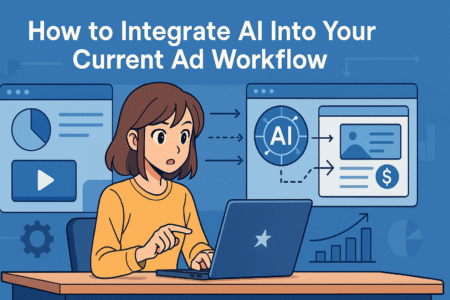
Integrating AI into your ad process doesn’t have to be a major overhaul. In fact, the smartest approach is usually to start small and build with intention. Let’s walk through how to introduce AI into your existing system in a way that feels manageable, efficient, and aligned with your creative goals.
Start With a Single Campaign for Controlled Testing
It’s easy to feel overwhelmed when you look at all the possibilities of AI-powered ad creative. That’s why beginning with a single campaign is a smart, low-risk way to get familiar with the tools and understand how they fit into your current workflow.
Start by identifying a campaign that meets these criteria:
- It has a clear goal, such as conversions, leads, or click-throughs
- You already have some historical data you can compare against
- It’s not your most high-stakes campaign, but still important enough to learn from
Once you’ve chosen the campaign, pick one or two areas where AI can support you. This could be:
- Generating ad copy variations with a tool like Copy.ai or Jasper
- Designing creative layouts with AdCreative.ai
- Running predictive tests to see which ad has the highest likelihood of success using a tool like Pencil
Keep the scope tight and measurable. Set performance benchmarks so you can compare how the AI-assisted version performs against your traditional approach. Whether you’re testing engagement rate, conversion rate, or cost per acquisition, having clear metrics will help you evaluate the impact and guide future integration.
The goal here isn’t to automate everything right away—it’s to learn what works, where AI fits naturally, and what areas still need that human touch.
Train Your Team on AI Tools and Interpretation
Introducing AI into your workflow isn’t just about the software—it’s about the people using it. Without proper understanding and alignment, even the best tools can go underutilized or misapplied.
Start by giving your team space to explore and learn. Many AI platforms offer onboarding videos, demos, or certification programs. Encourage team members to play around with the tools, test different features, and get comfortable with the interface.
Here’s how you can support your team during the transition:
- Offer short internal workshops or Q&A sessions to discuss how AI can help in day-to-day tasks
- Assign team members to become point people for different platforms (for example, one person owns AI copy generation while another handles visual automation)
- Create a shared document or wiki with how-to guides, templates, and AI-generated examples that worked well
Training also includes learning how to interpret AI output. For example:
- Understanding why a predictive model favored one ad over another
- Knowing how to adjust prompts to get better copy or visuals
- Spotting when the AI might miss the mark and needs human review
When your team knows how to use AI effectively—and when to step in—it increases confidence and consistency across your creative process. Over time, these skills will become part of your regular workflow, making everything smoother and more collaborative.
Connect AI Outputs to Your Existing Creative Stack
One of the easiest ways to make AI part of your ad workflow is by plugging it into the tools and systems your team already uses. That way, you’re not rebuilding your process—you’re just enhancing it.
Think about your creative stack. You probably use tools for:
- Project management (like Asana or Trello)
- Design and visuals (like Canva, Figma, or Adobe Creative Cloud)
- Ad platforms (like Meta Ads Manager, Google Ads, or Adzooma)
- Analytics and reporting (like Voluum or Woopra)
Many AI platforms integrate directly with these tools—or at least allow for easy export and import. For example:
- Use AdCreative.ai to generate ad images, then upload them to your Meta campaign directly from the dashboard
- Generate copy variations in Jasper and drop them into your campaign briefs in Trello or Google Docs
- Pull performance data from your campaigns into Smartly.io’s dashboard to generate auto-optimized creative recommendations
This kind of integration avoids duplication of work and reduces friction between tools. The more seamless the flow, the more likely your team will actually use the AI tools consistently.
If direct integration isn’t possible, create a simple step-by-step system. For instance:
- Generate creative in the AI platform
- Review and edit internally
- Export and upload into your ad manager
- Monitor results in your existing analytics dashboard
Keep it lightweight and realistic. You’re aiming for flow, not complexity.
Use Feedback Loops to Refine and Improve Continuously
Once your AI tools are in place, the real value comes from continuous refinement. This is where feedback loops play a crucial role.
AI thrives on data. The more you feed it quality insights, the smarter and more helpful it becomes. But this doesn’t happen automatically—you need to close the loop by reviewing what worked, what didn’t, and updating your inputs accordingly.
Here’s how to build an effective feedback system:
- After each campaign, review which AI-generated assets performed best
- Log what types of prompts, formats, or variations delivered the strongest results
- Adjust your next creative brief or input to reflect those learnings
This applies to copy, visuals, formats, and even predictive models. If a certain phrase or CTA consistently outperforms others, update your templates and prompt libraries. If one design layout drives conversions on mobile, prioritize that structure moving forward.
Over time, you’ll build a customized approach that reflects what works best for your brand, your audience, and your goals. Your AI outputs will become more aligned, and your human team will become better at interpreting and adjusting based on real-world performance.
And remember, feedback isn’t just about metrics. Get input from your internal team, customers, and even external partners. Sometimes a headline might perform well numerically but feel off-brand to your community. Balancing those perspectives keeps your creative aligned with your values while still optimizing for results.
Future Trends in AI-Powered Ad Creative
AI-powered ad creative is evolving quickly, and it’s not just about automating the basics anymore. The future is bringing more depth, nuance, and interactivity to the way we create and deliver advertising. If you’re looking to stay ahead of the curve, these emerging trends offer a glimpse of what’s next—and where the biggest opportunities might lie.
Emotion Detection in AI for Sentiment-Aware Ads
We’ve all seen ads that seem to hit the right emotional note at the right time—and that’s no accident. Emotional connection drives engagement, but up until recently, it’s been tough to measure or automate. That’s starting to change with AI’s growing ability to detect sentiment.
Emotion detection uses AI to analyze tone, facial expressions, voice patterns, and even word choice to understand how people are feeling. This tech is being integrated into ad platforms to help brands:
- Tailor messaging based on real-time emotional feedback
- Choose visuals and copy that evoke a specific emotional response
- Avoid tone-deaf messaging in sensitive or high-stress moments
Imagine serving a calm, reassuring ad to someone who’s been scrolling through stressful news headlines—or delivering a light-hearted product video when a user is watching entertainment content. These kinds of dynamic shifts in tone can improve user experience and make ads feel more human.
Tools that tap into sentiment analysis—like Affectiva or Realeyes—are already being tested by larger brands. But as the technology becomes more accessible, small businesses and solo marketers will likely have the chance to experiment too.
This is where AI starts to go beyond performance and into empathy. It’s not perfect yet, but the potential for more emotionally intelligent ads is exciting and very real.
AI-Generated 3D and Immersive Ad Formats
As digital experiences get richer, so do the expectations for how ads look and feel. AI-generated 3D and immersive ad formats are stepping into that space, creating highly engaging visuals that users can explore, interact with, or even personalize.
This trend is particularly promising for industries like fashion, home decor, tech, and gaming—where seeing a product in motion or in context makes a big impact.
Here’s how AI contributes:
- Automating the creation of 3D product models from 2D images
- Using generative AI to build virtual environments or augmented reality (AR) experiences
- Personalizing visuals based on user behavior or previous interactions
Some platforms now allow brands to create “try-on” experiences where users can see products on their body or in their space, using just their phone. And with tools like Google Swirl or Unity-powered ads, creating immersive content doesn’t require a full dev team anymore.
This technology is still finding its footing, but it’s moving fast. As generative AI becomes better at producing spatial designs and realistic motion, 3D and immersive ads will likely become much more common—even for smaller brands.
The takeaway? Start thinking about how your product or service could be experienced, not just shown.
Creative Intelligence as a Standard Ad Metric
We already track clicks, conversions, and engagement—but what about measuring creativity itself? Creative intelligence is becoming a new layer of analysis that helps marketers understand how different ad elements contribute to performance.
It’s not just about what worked, but why it worked.
AI is making it possible to break down each creative into its components—image, copy, tone, colors, format—and analyze the impact of each one individually. This gives you deeper insight into what really drives outcomes, and helps remove some of the guesswork from creative decision-making.
What you might start seeing in dashboards:
- Heatmaps showing where users focused their attention
- Scoring systems that rank creative combinations by emotional response
- AI recommendations on which elements to tweak for stronger results
Creative intelligence tools are especially helpful in high-volume campaigns, where you’re running dozens or even hundreds of variations. Instead of just knowing which ad performed best, you get insight into the patterns behind high-performing creatives.
This kind of analysis also creates a shared language between creative and performance teams. It helps bridge the gap between “data-driven” and “design-led” by showing how creativity and outcomes go hand in hand.
Over time, creative intelligence could become as essential as click-through rate or return on ad spend—especially as competition for attention keeps rising.
AI-Driven Voice and Video Ads in Multichannel Campaigns
Voice and video are already key parts of multichannel marketing—but AI is taking them to new levels. With advanced tools now able to generate synthetic voiceovers, lip-synced videos, and smart scripts, you can create polished multimedia ads faster than ever.
Some emerging use cases include:
- Auto-generating video ads for different markets using localized voices
- Creating dynamic voice ads that adjust based on time, weather, or location
- Using AI avatars or presenters for product walkthroughs or service intros
Tools like Synthesia, Descript, and Murf.ai are at the forefront of this trend. They allow marketers to produce voice and video content without needing actors, studios, or long editing cycles. You simply upload your script, choose your voice or avatar, and generate the content in minutes.
This makes it easier to:
- Repurpose existing content into video or audio formats
- Run consistent messaging across podcast ads, streaming platforms, and social media
- Reach audiences who prefer to listen or watch rather than read
Multichannel campaigns work best when the message is unified but flexible. AI lets you tailor the delivery for each format—without starting from scratch every time.
The key to success here is balance. While the tools can save time, the script, tone, and concept still need a human eye to ensure they sound natural and on-brand.
Conclusion: Smarter Ad Creative Starts With AI
AI isn’t just a passing trend—it’s changing the way we create, manage, and measure ads. If you’ve ever felt overwhelmed by the pace of content creation or struggled to get the results you hoped for, integrating AI into your ad workflow could be a turning point. The key is knowing where to start and how to use it with intention.
Embrace AI to Save Time, Cut Costs, and Grow Revenue
The biggest advantage of AI-powered ad creative is how much time it can save. Instead of spending hours on repetitive tasks like resizing images or writing minor copy variations, you can let AI handle the heavy lifting while you focus on the bigger picture.
Here’s where you start to see real value:
- Generate multiple creative versions in minutes
- Automatically optimize based on real-time performance data
- Reduce costs by focusing your budget on what’s actually working
When used well, AI helps stretch your resources. You can produce more content without expanding your team or spending more money. And with better-targeted, data-backed creatives, your campaigns tend to perform better—bringing in more revenue without increasing your spend.
This doesn’t mean AI will magically fix everything. But when paired with a clear strategy and a willingness to adapt, it can open doors to faster, more consistent growth.
The Right Tools + Human Insight = Sustainable Success
Success with AI ad creative doesn’t come from the tool alone—it comes from how you use it. The most effective campaigns are built on a blend of technology and human insight.
Here’s what that balance looks like:
- Use AI tools to generate creative concepts or optimize performance
- Apply human judgment to shape messaging, brand tone, and emotional connection
- Continually refine your inputs and strategies based on performance data and audience feedback
Your team still plays a critical role in this process. AI can suggest what might work based on data, but it’s your insight that turns those suggestions into something meaningful and aligned with your brand.
This is especially true when you’re tackling sensitive topics, building emotional narratives, or launching brand-defining campaigns. AI can help shape the structure, but the soul of the message still needs a human touch.
The brands that thrive with AI aren’t the ones that hand everything over to automation—they’re the ones that collaborate with it, learn from it, and stay curious about what’s possible.
Take the Next Step: Start Experimenting With AI Today
If you’re wondering when to start using AI-powered ad creative, the answer is: now. You don’t need to commit to a full overhaul. Just start small and explore what feels doable for your team and your workflow.
Here are a few ways to get going:
- Test AI-generated ad copy with a tool like Copy.ai or Jasper for your next campaign
- Use AdCreative.ai to produce a handful of visual ad variations and compare performance
- Try a predictive analytics platform like Pencil to forecast which creatives are most likely to convert
- Pick one campaign where you automate versioning and optimization using Smartly.io
Keep things simple at first. Set clear goals, track performance, and use what you learn to refine your approach. You’ll likely find that what felt complicated at first quickly becomes second nature.
And if something doesn’t quite work? That’s okay. AI tools improve with usage, and your understanding of how to use them will grow with every campaign. Just stay flexible and open to learning.

